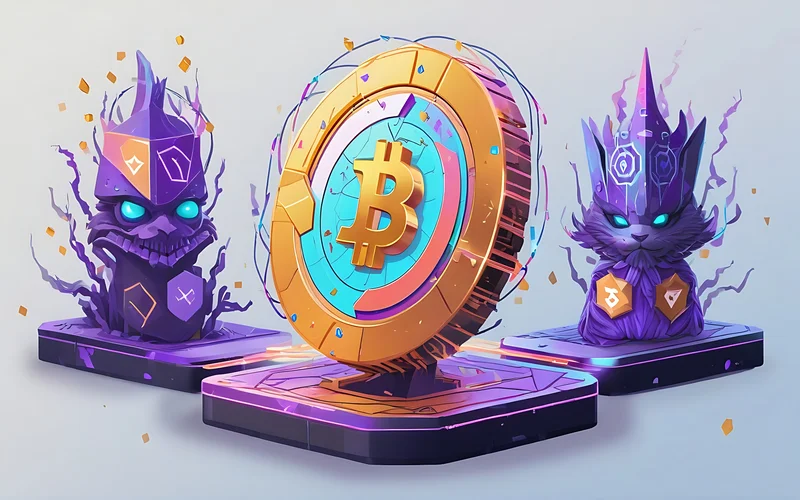One innovative idea that is changing the traditional financial landscape in the quickly changing world of finance is becoming more and more popular. Decentralized Finance, or DeFi, leverages blockchain technology to democratize access to financial services, eliminating intermediaries and fostering a more inclusive, secure, and efficient financial ecosystem. This blog delves into the intricacies of DeFi and blockchain, offering insights that cater to both novices and seasoned crypto enthusiasts.

Understanding Blockchain Technology
DeFi is based on blockchain technology, a digital ledger that keeps track of transactions over a network of computers. Unlike traditional databases, blockchains are decentralized, meaning no single entity controls the entire network. This decentralization ensures unparalleled security, transparency, and integrity in transactions. Each ‘block’ in the chain contains a few transactions; once a block is completed, it’s added to the chain in a linear, chronological order, creating a permanent record of transactions.
The Pillars of Decentralized Finance
Defi is built on the principles of openness, interoperability, and programmability:
- Openness: DeFi platforms operate on open-source software, allowing anyone with an internet connection to participate without needing approval from a governing body.
- Interoperability: DeFi projects are often designed to be compatible with one another. This interoperability enables a seamless ecosystem where diverse financial services can be accessed on a single platform.
- Programmability: Smart contracts automate transactions and agreements, executing predefined conditions without human intervention. This programmability underpins the functionality of DeFi applications, making them flexible and efficient.
Key Components of DeFi
Defi encompasses a wide range of financial services, including but not limited to:
- Lending Platforms: These platforms connect borrowers directly with lenders, facilitating loans without traditional financial institutions.
- Decentralized Exchanges (DEXs): Unlike centralized exchanges, DEXs allow users to trade cryptocurrencies directly from their wallets, enhancing privacy and security.
- Stablecoins: Pegged to stable assets like the US dollar, stablecoins offer a less volatile means of participating in the DeFi ecosystem.
- Yield Farming and Liquidity Mining: These practices involve users providing liquidity to DeFi protocols in exchange for interest or rewards, often in the form of governance tokens.
Advantages of DeFi
- Accessibility: DeFi opens the door to financial services for unbanked and underbanked populations worldwide.
- Transparency: Blockchain’s transparent nature ensures all transactions are visible, auditable, and secure.
- Efficiency: By automating processes and eliminating intermediaries, DeFi significantly reduces transaction times and costs.
- Control: Users have full control over their assets, enhancing privacy and security.
Challenges Facing DeFi
Despite its potential, DeFi does not come without challenges:
- Scalability: As the DeFi ecosystem grows, blockchain networks face challenges in scaling up to meet increased demand without compromising speed or security.
- Regulation: The regulatory landscape for DeFi is still evolving, posing potential hurdles for widespread adoption.
- Security Risks: While blockchain is secure, DeFi platforms and smart contracts can be vulnerable to hacks if not properly audited.
The Future of DeFi
The future of DeFi hinges on overcoming its current challenges and continuing to innovate. Developers are actively developing solutions such as Layer 2 scaling, cross-chain interoperability, and enhanced security protocols to address these issues. As technology matures and regulatory clarity improves, DeFi has the potential to reshape the global financial landscape, making it more inclusive, efficient, and secure.
Blockchain Beyond Finance
While DeFi is a prominent application of blockchain technology, its potential extends far beyond finance. Blockchain is revolutionizing industries such as supply chain management, healthcare, and digital identity verification, providing transparency, efficiency, and security.
Conclusion
Decentralized Finance and blockchain technology represent a paradigm shift in how we conceive of andinteract with financial services. By offering an open, efficient, and secure alternative to traditionalfinance, DeFi has the potential to democratize access to financial services, empowering individualsworldwide. As the ecosystem continues to evolve and mature, it holds the promise of creating a moreinclusive financial future. For beginners and experienced crypto lovers alike, the journey into DeFi andblockchain is not just fascinating; it’s a glimpse into the future of finance.
Disclaimer
FAQ
Decentralized Finance, or DeFi, is a blockchain-based form of finance that eliminates intermediaries by allowing people to access financial services directly through technology, making the financial system more inclusive and efficient.
Blockchain technology offers a secure, transparent, and decentralized ledger that records all transactions. This ensures the integrity and security of financial activities within the DeFi ecosystem.
DeFi offers numerous advantages, including accessibility to unbanked populations, enhanced transparency, reduced transaction costs, and full control over personal assets.
Despite its potential, DeFi faces challenges like scalability, regulatory uncertainty, and security vulnerabilities that need to be addressed for widespread adoption.
Yes, by overcoming current challenges and continuing innovation, DeFi has the potential to make the financial system more inclusive, efficient, and secure, reshaping how we access and manage financial services.


